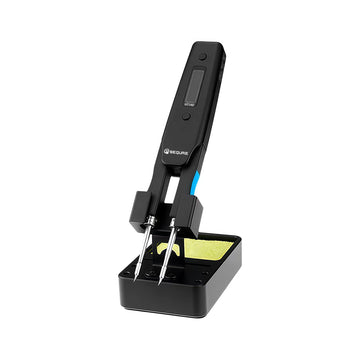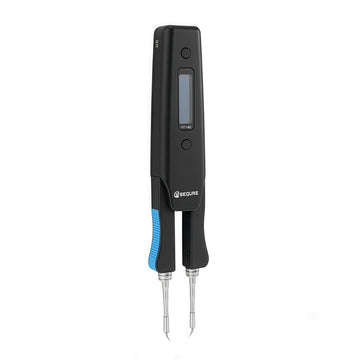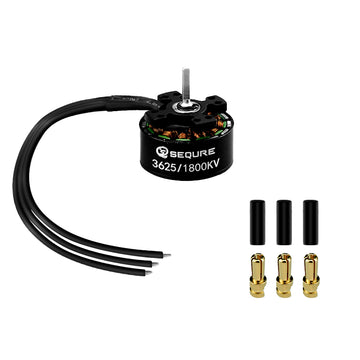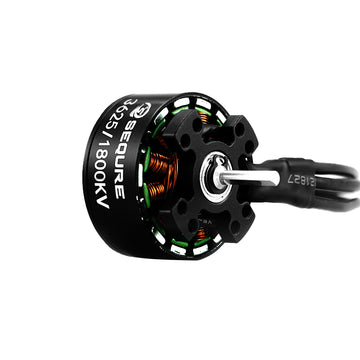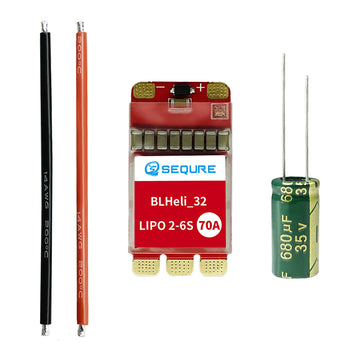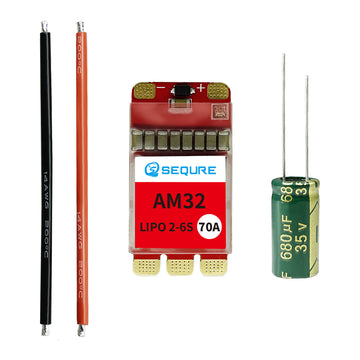Soldering Iron Knowledge Big Collection
Friends, do you know an soldering iron? Whether you know it or don't know it. Do you have the following series of questions about the name of soldering iron?
What is a soldering iron?
What are the classifications of soldering irons?
What can an electric soldering iron be used for/why should I buy an soldering iron/what are the applications of an soldering iron?
How to choose an soldering iron?
How to use the soldering iron/How to use the soldering iron more effectively?
Now with these questions we continue to read this article, let us answer these questions one by one.
The electric soldering iron is composed of a soldering iron tip, a soldering iron core, a shell, a handle, a power lead, and a plug.
Electric soldering iron is an essential tool for electronic production and electrical maintenance. Its main purpose is to solder electrical components and wires. For the convenience of use, "solder wire" is usually used as the flux, and the solder wire generally contains rosin (flux) for fluxing.

WHAT ARE THE CLASSIFICATIONS OF SOLDERING IRONS?
According to the mechanical structure, it can be divided into internal heating type electric soldering iron and external heating electric soldering iron. According to the function, it can be divided into welding iron and tin absorbing soldering iron. According to different uses, the electric iron can be divided into high-power soldering iron and small-power soldering iron. According to the volume, it can be divided into AC soldering iron and DC soldering iron.

1) External heating type soldering iron
It is composed of soldering iron tip, soldering iron core, shell, wooden handle, power lead, plug and other parts. Since the soldering iron tip is installed in the iron core, it is called external heated soldering iron. The soldering iron core is the key component of the electric soldering iron. It is composed of the electric heating wire wound on a hollow porcelain tube in parallel. The mica sheet in the middle is insulated, and two wires are led out to connect with 110-240V AC power supply. There are many specifications of external heated electric soldering iron, such as 25W, 35W, 65W, 110W, etc. the higher the power, the higher the temperature of the soldering iron tip.
2) Internal heating soldering iron
It is composed of a handle, a connecting rod, a spring clip, a soldering iron core and a soldering iron tip. Because the iron core is installed in the head of the soldering iron, it has fast heating and high heat utilization rate. Therefore, it is called internal heating electric soldering iron. The commonly used specifications of internal heated electric iron are 20W and 50W. Because of its high thermal efficiency, 20W internal heated electric iron is equivalent to 40W external heated electric iron. The rear end of the internal heated electric soldering iron is hollow, which is used to sleeve on the connecting rod and fixed with spring clip. When the soldering iron tip needs to be replaced, the spring clip must be withdrawn first, and the front end of the soldering iron tip must be clamped with pliers, and then slowly pulled out. Remember not to use too much force to avoid damaging the connecting rod.
3) Constant temperature soldering iron
The constant temperature electric soldering iron tip is equipped with a temperature controller with a magnet to control the power on time and realize temperature control. That is, when the electric soldering iron is electrified, the temperature of the soldering iron rises. When the temperature reaches the predetermined temperature, the magnetic core contact is disconnected because the strong magnet sensor reaches the Curie point, and then the power supply to the electric soldering iron is stopped; when the temperature is lower than that of the strong magnet sensor, the magnetic core contact is disconnected At the inner point, the strong magnet will restore its magnetism and pull the permanent magnet in the core switch to make the contact of the control switch connected and continue to supply power to the electric soldering iron. In this way, the purpose of temperature control is achieved.
4) Tin absorbing electric soldering iron
The tin absorbing electric soldering iron is a kind of welding tool which integrates the piston type tin absorber and the electric soldering iron. It has the characteristics of convenience, flexibility and wide application range. The disadvantage of this kind of soldering iron is that only one solder joint can be removed at a time.
5) Soldering station and mini soldering iron
6) AC soldering iron and DC soldering iron
WHAT CAN A SOLDERING RION DO?/ WHY SHOULD I BUY A SOLDERING IRON? /WHAT ARE THE APPLICATIONS OF SOLDERING IRON?
1) Roofing Trades
Soldering tools are great for making repairs to a roof and for making a flashing roof. You can use soldering iron to fuse components of copper roofs and fuse galvanized metal for flashing. The moment the solder cools it will become waterproof, this can be especially helpful in the rainy season when repairs are highly needed to be made. Due to te windy nature of roof repairs, You'd batter to choose the one heat up quickly.
2) Soldering Metal Gutters
If your home has metal gutters, you can held them together by soldering. The materials are similar to the ones roofers use for flashing roofs. Soldering can make the gutters leak proof permanently. Absolutely convenient on rainy days!
3) Artistic Decorations
For example, you can create stained glass windows or mosaics. First, preparing some beautiful patterns of different colors and a soldering iron more than 100-watt, Then, use your imagination to join the separate pieces of colored glass together. In tradition, artisans used lead-based solder in stained glass windows, which is unhealthy, but nowadays lead-free solders are more common for making stained glass windows and mosaic sculptures. In addition, soldering iron is a perfect tool for performing quick repairs of loose glass.
You can creat lamps of different shapes and colors
4) Auto Repair
Tthough, joining performed on automobiles need hard metal and need acetylene torches and more traditional welding methods, But soldering irons can be useful for smaller tasks, soldering metal is soft, can be used to smoothrough edges, tighten jointswhen and fill irregular cavities when doing auto body repair. And it can also be used in Bicycle repair, Motorcycle reparie, in Musical instrument repair
and in electrical repair, such as: TV, refrigerator, water dispenser, humidifier, dust collector, air conditioner, electric fan, Dishwasher, washing machine, dryer, vacuum cleaner, electric iron, Water heater, dehumidifier, hair dryer, shaver, massager, ventilation fan, Oven, microwave, rice cooker, soymilk maker, electric kettle, induction cooker etc.
5) Plumbing and Line
If you have a soldering iron in home. It can be convenient when you need to repair copper and other metal pipes. Using lead-free solder to join plumbing pipes is safty. lead is a kind of toxic materials, we must avoid ourselves to any lead. For pipes, small operating space, and no power plug nearby, then a Battery-use handle soldering iron is the best choice.
A soldering iron is also the best way to join wires and multiple pieces of metal, there are many other uses for a soldering iron around our home life. With your creative thinking, just come up with more uses of soldering iron for home projects, anything is possible.
6) Circuit Boards
Plastic circuit boards of electronics, is one of the most common uses of a soldering iron. Using soldering iron to join two wires to establish electrical continuity and fixed the wiring down to the circuit board. In this way, we need samrt soldering tools which are more accurate and including controller.
7) Electricians
Electricians ofen use soldering irons to splice wires in residential or commercial wiring, sometimes use to wire in electrical terminals inside electrical devices or in control panels
8) Vacuum Tubes
Silver tin solder is placed on a pre-fab vacuum switch tube to form a corrugated ring with a cover that forms a tight vacuum on the circuitry board to which the tube is attached.This is important in electronics as the near-vacuum allows free passage for the electric current to go through.
9) Professional repairman
Soldering tools can be used in Precision maintenance situation. For example, electrical repair, digital repair, musical Instrument repair, watch repair etc.
10) Lab and engineer
Soldering iron can be used in electronics laboratory for engineers.
11) Jewelry
Jewelry require higher precision, so jewelers will prepare different kinds of solder tips in working with jewelry. The solder has a high percentage of silver, so they also use accurate torches that burn propane or butane. Because of the oxides that form when you apply heat to metal, jewelers typically use borax flux to reduce the metal oxides that form when you apply heat to metal. Flux is an important component of any soldering job.
12) 3D printer, UAV FPV, skateboard and other RC electronic DIY
HOW TO CHOOSE SOLDERING IRON?

There are various kinds of electric soldering irons. So, how should we choose and buy electric soldering iron?
The selection of proper electric soldering iron will greatly improve the efficiency of electronic welding, but generally, the selection should be based on the actual situation of the object to be welded. Generally, the type and power of electric soldering iron should be considered. In addition, the type of soldering iron tip is also one of the important factors affecting the selection.
Select according to the power of soldering iron
If the power of the soldering iron used is too high, it is easy to burn out the components (generally, when the junction temperature of diodes and triodes exceeds 200 ℃), and the printed wire will fall off from the substrate; if the power of the used soldering iron is too small, the solder can not be fully melted, the flux can not be volatilized, and the solder joint is not smooth and firm, so it is easy to produce false soldering. Generally, 20W is suitable for welding integrated circuits, printed circuit boards, CMOS circuits, decorative transistors, IC receivers and recorders, and TV sets for general circuit experiments. For repairing vacuum tube machines, such as gall machines and old instruments, 35W is appropriate, while for externally heated ones, it is 45W. For welding the wiring of large transformers and grounding trunk on the metal bottom plate, internal heating type 50W and external heating type are adopted Type 75W, and some occasions with higher power.
According to the type of soldering iron tip

There are various shapes of soldering iron tip. The key point of selection is that it can always keep a certain amount of solder, melt the solder on the joint quickly and effectively, and do not produce false soldering, overlapping tin and hanging tin. There is no burr in the solder joint, and the boards and components are not damaged. If the solder joint on the machine is brand new and bright, the tin dipping section of the soldering iron tip can be larger. With flat or oval head, the heat transfer is fast and the operation is convenient. The tin oxide layer is thick, and the soldering iron head is relatively sharp, which is easy to break through.
Due to the high density of components, the corresponding thin ferroalloy tip should be selected to avoid scalding and tin coating. When assembling and disassembling IC block, special shape soldering iron tipis often used. Sometimes because the welding can not be done, and to avoid damaging the plastic parts, the bending iron head is selected. Of course, it also depends on the operating habits and hobbies of each person.
Type I (sharp type), the tip of soldering iron tip is sharp and thin. It is suitable for precision welding or narrow welding space. It can also correct the tin bridge in chip welding
B type (conical type), B type soldering iron tip has no directionality, and the whole front end of soldering iron tip can be welded. Suitable for general welding, no matter the size of solder joint, can be used
Type D (flat type), welded with the part of the nozzle. It is suitable for welding with more tin, such as large welding area, thick terminal and large pad
Type C (horseshoe type) is welded with the slope of the front end of the soldering iron tip, which is suitable for welding with more tin content. The application range of type C is similar to type D, such as large welding area, thick terminal and large pad
K type (knife type), using knife type partial welding, vertical or pull welding can be used. It belongs to multi-purpose soldering iron tip. Suitable for welding SOJ, PLCC, SOP, QFP, power supply, grounding parts, correction tin bridge, connector, etc
H type, tin coating on the bottom of the soldering iron tip. It is suitable for SOP, QFP with large pitch in pull welding
HOW TO USE ELECTRIC SOLDERING IRON? / HOW TO USE ELECTRIC SOLDERING IRON MORE EFFECTIVELY?

Usage method / steps of electric soldering iron:
1. The external observation of the electric iron was carried out first. Mainly check whether the electric soldering iron is damaged as a whole, the power line is burnt, the exposed wire, and whether the plug is tight
2. Then measure whether the iron core of the electric soldering iron is normal with the resistance gear of the multimeter. It is found by testing the resistance value. Take the commonly used 30W electric iron as an example, its resistance value is about 2K, that is, 2000 ohm. Turn the multimeter to the resistance position, contact the plug with two probes, and observe the value of the meter. Infinity means open circuit, zero means short circuit, do not use.
3. If it is a new electric soldering iron, it should be electrified first after there is no problem in the measurement. Because the new soldering iron in order to protect the iron head will be coated with oil, so the electricity first generated heat to burn the layer of oil. Otherwise, the welding quality will be affected. Be sure to keep ventilation when electrifying, so that the smell can be emitted as soon as possible.
4. Then check the condition of the soldering iron head. Generally speaking, the soldering iron head should be in the shape of circular bevel as far as possible. The welding effect is good. Focus on the soldering iron head of the circular slope above the welding layer, is a layer of relatively bright material. If it has been blackened and dark, it can be polished with a file, and then electrified to generate heat, then apply flux, and then solder to form the soldering layer again.
5. When welding, the copper sheet of the circuit and the pins of the components should be cleaned. Clamp with tweezers and place the pin vertically in the round hole. First, a little soldering tin is plated on the soldering iron head, and then the tin plated part of the soldering iron head is used to close the pin and copper sheet at a certain angle. At the same time, the other side of the pin is butted with solder, and the solder is melted by the heat transferred from the soldering iron to form a solder joint.
6. Pay attention to the welding time must not be too long, 3 seconds is appropriate. If the time is too long, the copper skin will fall off easily. After the solder joint is formed, lift up the soldering iron to complete the welding work.
At the same time, the service life of electric iron is also very important.
Before using the new soldering iron, we all like to polish the iron head with fine sandpaper, electrify and heat it, dip it in rosin, and then contact the solder wire with the edge of the iron head, so that a layer of tin is evenly plated on the iron head.
This can facilitate welding and prevent the surface oxidation of the soldering iron head. I use a replaceable soldering iron. If I don't pay attention to the maintenance of the iron head, I need to replace the iron head.
If the old soldering iron head is blackened due to serious oxidation, the surface oxide can be removed by steel frustration to expose the metallic luster, and then tin can be used again.
When using AC power supply, pay special attention to safety. The following points should be seriously done:
1.It is better to use three pole plug for electric soldering iron plug. Make sure that the enclosure is properly grounded.
2.Before use, check the power plug and power cord carefully for damage. And check whether the soldering iron head is loose.
3.The electric iron should not be knocked hard during use. To prevent falling. If there is too much solder on the soldering iron head, wipe it off with a cloth. Do not throw at random to avoid scalding others.
4.During welding, the soldering iron should not be left everywhere. When not welding, it should be placed on the soldering iron frame. Pay attention that the power line should not be placed on the soldering iron head to prevent the insulation layer from being damaged and causing accidents.
5.After use, the power supply should be cut off in time and the power plug should be pulled out. After cooling, return the electric iron to the toolbox.
In conclusion, in order to use the electric iron safely and effectively, we should:
1.Before each soldering operation, wipe with a wet sponge to remove the oxides and foreign matters on the soldering head. Do not use too much force to avoid splashing residue, scalding people or damaging materials.
2.The soldering iron head should be coated with a layer of tin before use.
3.The electric soldering iron should not be heated in air for a long time to avoid burning out the iron head.
4.When the electric soldering iron is not in use or suspended, it is necessary to dip the soldering iron head with tin and place it on the soldering iron rack to protect the safety of the iron and personnel.
5.The constant temperature soldering iron with the soldering head removed shall not be electrified, so as to avoid internal oxidation caused by continuous heating and shorten the service life of the soldering iron.
6.If the soldering iron head is damaged, deformed or pinhole appears, it should be stopped immediately to avoid damaging the object to be welded.
7.When the electric iron is not in use, turn off the power and pull off the plug to avoid scalding others.
8.Do not touch the metal part near the soldering head to avoid scalding
9.Do not use soldering iron near inflammables
10.When the electric iron is damaged, especially after the power line is damaged, it is forbidden to use it
11.Do not wet the electric soldering iron, do not use or disassemble the electric soldering iron when the hands are wet, and do not pull the power cord
12.The electric iron should be used and stored in places where children are not easy to contact or supervised by adults
Precautions:
Before using the new soldering iron, the iron head shall be polished with fine sandpaper, electrified and heated, dipped in rosin, and then the edge surface of the iron head shall be contacted with the solder wire, so that a layer of tin can be evenly plated on the iron head. In this way, it is easy to weld and prevent the surface oxidation of the soldering head. If the old soldering iron head is blackened due to serious oxidation, the surface oxide can be removed by steel frustration to expose the metallic luster, and then tin can be used again.
Finally, it must be mentioned that the necessary auxiliary products used with the electric soldering iron are electric soldering iron, solder wire, solder paste, anti-static bracelet, solder fume exhauster, etc.
Like welding and love welding friends, you can pay attention to it!
Thank you for reading.
Dear Customer/DIYer
Thank you very much for your support and hope you have a happy and interesting shopping experience. We are very welcome to the majority of customers and friends to participate in our DIY interesting articles sharing activities.
Share & Cash Back
The number of words is more than 300 words, have exquisite picture in the article. Send us your article. After check your article and it pass through, we will cashback the amount of 5-8 dollars according to the quality of the articles.
Welcome to contact this email (info@sequremall.com) and send us the articles for checking.







